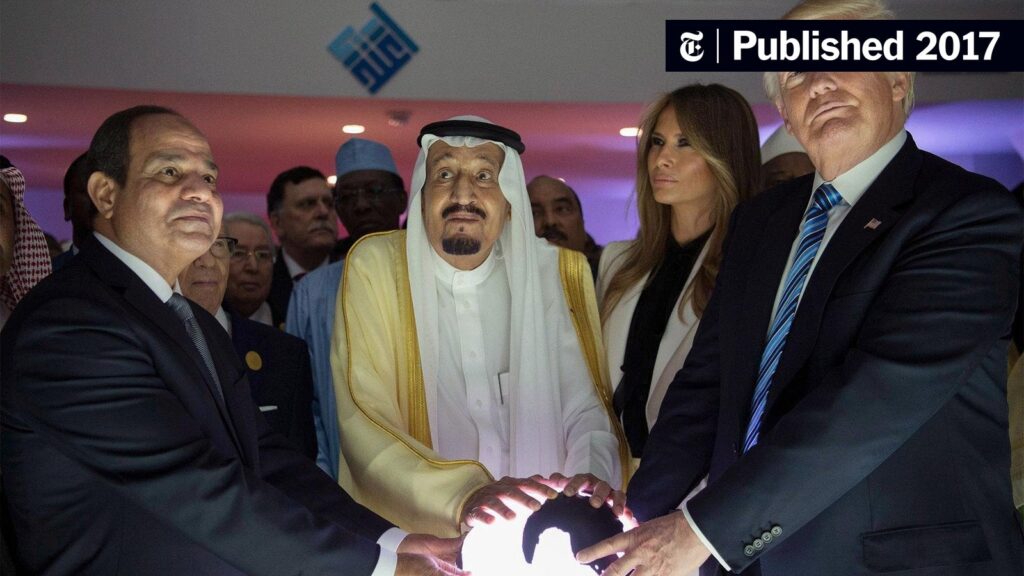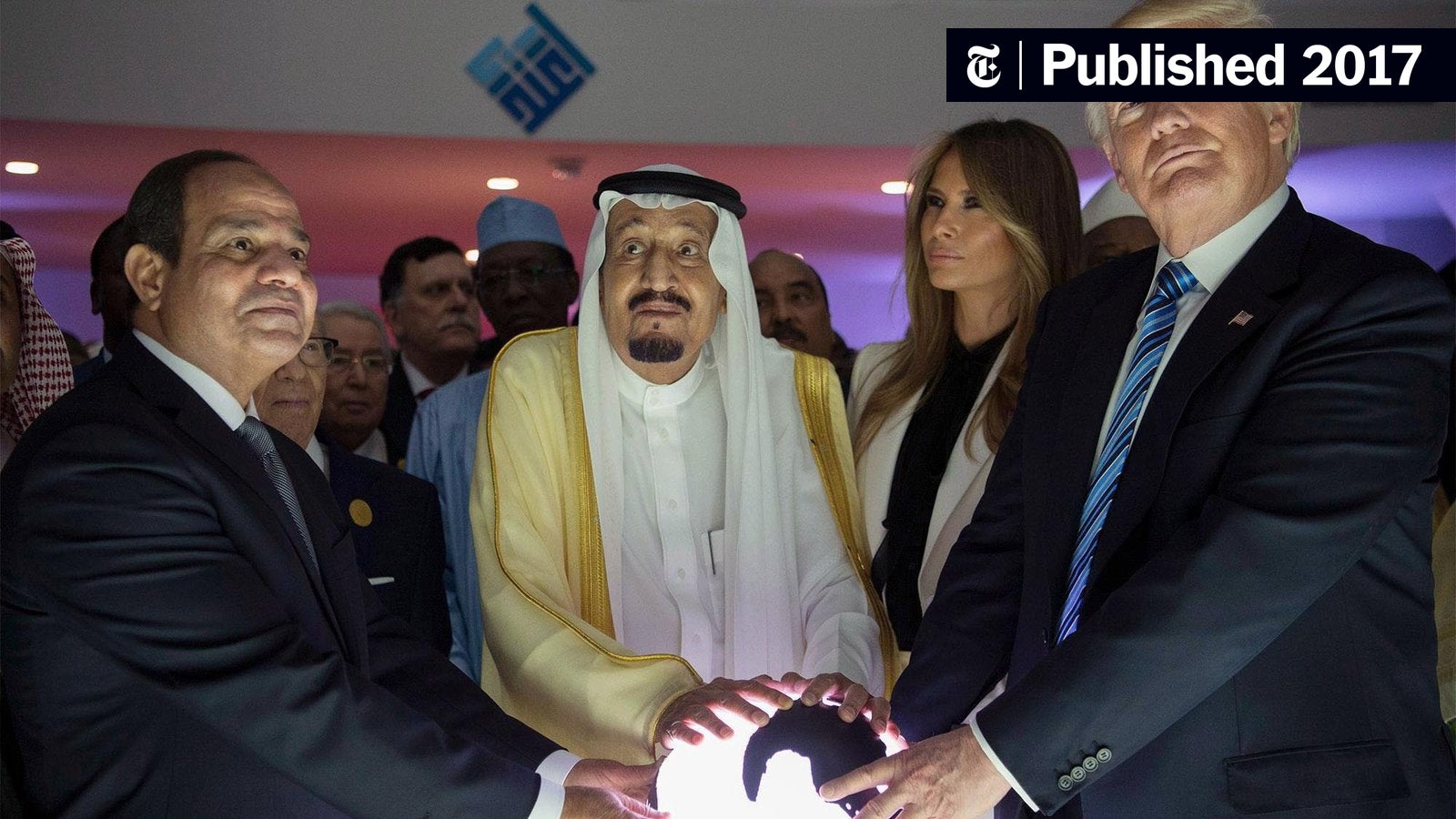
Trump’s Visit to Saudi Arabia: A Deep Dive into Diplomacy, Deals, and Global Implications
Donald Trump’s visit to Saudi Arabia in May 2017 marked a significant moment in U.S.-Saudi relations and international diplomacy. This trip, his first foreign engagement as President, signaled a clear shift in American foreign policy towards the Middle East and set the stage for numerous geopolitical and economic developments. This comprehensive analysis explores the multifaceted dimensions of Trump’s visit, examining its diplomatic significance, economic impacts, and long-term consequences.
The Diplomatic Overture: Resetting U.S.-Saudi Relations
The visit was designed to reset relations between the United States and Saudi Arabia, which had become strained under the Obama administration due to differences over the Iran nuclear deal and the handling of regional conflicts. Trump’s approach was markedly different, emphasizing shared interests in countering terrorism and containing Iranian influence.
A Grand Welcome and Symbolic Gestures
King Salman and the Saudi government orchestrated a lavish welcome for President Trump, complete with ceremonial swords dances and a state dinner. These gestures were not merely symbolic; they represented a concerted effort to build a strong personal rapport between the two leaders and to publicly demonstrate the importance of the U.S.-Saudi alliance. The Saudis invested heavily in the optics of the visit, ensuring that it conveyed a message of partnership and mutual respect.
The Riyadh Summit: Uniting Against Extremism
A centerpiece of the visit was the Riyadh Summit, which brought together leaders from over 50 Muslim-majority countries. Trump’s speech at the summit called for unity in the fight against extremism and terrorism, urging Muslim nations to take the lead in combating radical ideologies within their own communities. He avoided the harsh rhetoric about Islam that he had used during his campaign, instead emphasizing the shared values of peace, justice, and tolerance.
The summit also saw the launch of the Global Center for Combating Extremist Ideology (Etidal), a Saudi initiative aimed at countering extremist narratives online and promoting moderate voices. The U.S. pledged its support for the center, highlighting the growing cooperation between the two countries in the fight against terrorism.
Economic Agreements: Multi-Billion Dollar Deals
Beyond the diplomatic overtures, Trump’s visit was also characterized by a series of major economic agreements between the U.S. and Saudi Arabia. These deals, valued at hundreds of billions of dollars, were touted as a boon for the American economy and a sign of Saudi Arabia’s commitment to investing in the U.S.
Arms Sales and Defense Cooperation
The most significant component of the economic agreements was a massive arms deal worth approximately $110 billion immediately, with potential sales reaching $350 billion over the next decade. This deal included the sale of advanced military equipment, such as tanks, combat ships, missile defense systems, and cybersecurity technology. The Trump administration argued that these sales would not only boost American defense industries but also enhance Saudi Arabia’s ability to defend itself against external threats and contribute to regional stability.
Infrastructure and Investment Projects
In addition to arms sales, the agreements included commitments by Saudi Arabia to invest in U.S. infrastructure projects and to increase its holdings of U.S. Treasury bonds. These investments were intended to create jobs in the U.S. and to support economic growth. Saudi Arabia’s Public Investment Fund (PIF) also announced plans to invest billions of dollars in American technology companies and other sectors.
Analyzing the Economic Impact
The economic impact of Trump’s visit to Saudi Arabia has been a subject of debate among economists and policy analysts. While the headline figures were impressive, the actual realization of these deals has been more complex and gradual.
Job Creation and Economic Growth
The Trump administration claimed that the arms sales and investment agreements would create hundreds of thousands of jobs in the U.S. However, critics pointed out that the actual number of jobs created would likely be lower, as many of the deals were contingent on future developments and market conditions. Additionally, some argued that the focus on arms sales could divert resources from other sectors of the economy.
Impact on the Defense Industry
The arms deals undoubtedly provided a significant boost to the American defense industry, with companies like Lockheed Martin, Boeing, and Raytheon securing major contracts. These contracts helped to sustain jobs and investment in the defense sector, but also raised ethical concerns about the role of the U.S. in fueling regional conflicts.
Geopolitical Implications and Regional Dynamics
Trump’s visit to Saudi Arabia had far-reaching geopolitical implications, shaping regional dynamics and influencing the balance of power in the Middle East.
Strengthening the Anti-Iran Alliance
A key objective of the visit was to strengthen the alliance between the U.S. and Saudi Arabia against Iran. Trump’s strong rhetoric against Iran and his support for Saudi Arabia’s efforts to counter Iranian influence in the region were welcomed by the Saudi leadership. This alignment of interests led to increased cooperation between the two countries on issues such as the conflicts in Yemen and Syria.
The Qatar Crisis
Shortly after Trump’s visit, Saudi Arabia, along with several other Arab countries, imposed a blockade on Qatar, accusing it of supporting terrorism and maintaining close ties with Iran. Some observers believe that Trump’s visit emboldened Saudi Arabia to take a more aggressive stance against Qatar, believing that it had the full backing of the U.S. The Qatar crisis further destabilized the region and complicated U.S. efforts to mediate conflicts.
The Israeli-Palestinian Conflict
Trump’s visit also touched on the Israeli-Palestinian conflict, with the administration expressing its desire to broker a peace deal between the two sides. Saudi Arabia, while not formally recognizing Israel, has historically played a behind-the-scenes role in promoting Arab-Israeli peace. The Trump administration hoped to leverage Saudi influence to advance its peace efforts, but these efforts ultimately proved unsuccessful.
Long-Term Consequences and Evolving Relations
The long-term consequences of Trump’s visit to Saudi Arabia are still unfolding, but several key trends have emerged.
Strained Relations Under Biden
The relationship between the U.S. and Saudi Arabia has become more strained under the Biden administration, which has taken a tougher stance on human rights and the war in Yemen. The Biden administration has also sought to revive the Iran nuclear deal, a move that is strongly opposed by Saudi Arabia. Despite these differences, the U.S. and Saudi Arabia continue to cooperate on counterterrorism and other shared interests.
Saudi Arabia’s Diversification Efforts
In recent years, Saudi Arabia has embarked on an ambitious program of economic diversification, known as Vision 2030. This program aims to reduce the country’s dependence on oil revenues and to develop new industries, such as tourism, technology, and renewable energy. The U.S. has expressed its support for Vision 2030 and has sought to partner with Saudi Arabia on these initiatives.
The Future of U.S.-Saudi Relations
The future of U.S.-Saudi relations will depend on a variety of factors, including the political landscape in both countries, the evolving dynamics of the Middle East, and the global energy market. While the relationship may face challenges in the years ahead, the strategic importance of the U.S.-Saudi alliance is likely to endure.
A Deeper Understanding Through Key Questions
To further clarify the context and implications of Trump’s visit to Saudi Arabia, consider these questions:
- What specific agreements were made regarding counterterrorism cooperation? These agreements involved intelligence sharing, joint training exercises, and efforts to counter extremist propaganda.
- How did Trump’s visit affect Saudi Arabia’s regional ambitions? The visit emboldened Saudi Arabia to pursue its regional interests more assertively, particularly in its rivalry with Iran.
- What were the human rights implications of the U.S.-Saudi alliance under Trump? Critics argued that the Trump administration’s close relationship with Saudi Arabia overlooked human rights concerns.
- How has the Saudi approach to combating extremism evolved since the Riyadh Summit? Saudi Arabia has invested heavily in initiatives to counter extremist ideologies and promote moderate voices.
- What role did Jared Kushner play in facilitating U.S.-Saudi relations during Trump’s presidency? Kushner served as a key intermediary between the Trump administration and the Saudi royal family.
- How did the visit influence Saudi Arabia’s Vision 2030 economic diversification plan? The visit signaled U.S. support for Vision 2030 and encouraged Saudi Arabia to pursue its economic reforms.
- What impact did the arms deals have on the Yemeni civil war? The arms deals fueled the conflict in Yemen, contributing to a humanitarian crisis.
- How has the relationship between the U.S. and Saudi Arabia changed under the Biden administration? The relationship has become more strained due to differences over human rights and the Iran nuclear deal.
- What are the key areas of ongoing cooperation between the U.S. and Saudi Arabia? The two countries continue to cooperate on counterterrorism, energy security, and regional stability.
- What are the potential future scenarios for U.S.-Saudi relations? The future of the relationship will depend on a variety of factors, including political developments in both countries and the evolving dynamics of the Middle East.
Navigating the Complexities of International Relations
Trump’s visit to Saudi Arabia was a complex and consequential event, with significant implications for U.S. foreign policy, the global economy, and regional stability. While the visit was initially hailed as a success by both sides, its long-term consequences have been more nuanced and contested. Understanding the multifaceted dimensions of this visit requires a careful analysis of its diplomatic, economic, and geopolitical aspects, as well as an appreciation of the evolving dynamics of the U.S.-Saudi alliance.

